This is the standard Galaxy S9, by the way. Yes, the S9+ gets a second lens for telephoto and ‘Portrait’ depth effects, and maybe that’s another article for another day. But the principal camera is the most interesting, with a 'Fast2L3 Sensor', meaning essentially that there’s an extra layer of silicon beneath the pixel electronics, comprising half a Gigabyte of dedicated camera RAM.
The idea is that imaging information can be grabbed far faster than ever before, i.e. you don’t have to wait for the main phone processor and RAM to store the pixel information. The camera RAM grabs and stores, all on its own, making for very fast capture when needed. Most photos captured by the S9 will actually comprise 12 separate exposures, grabbed fast, processed and analysed for best results. In theory, this should deliver noiseless 'PureView' style images, in much the same manner as Google's Pixel devices with their HDR+ software.
Even more, there’s a dual aperture system, f/1.5 and f/2.4, the former for maximum light ingress in low light and for arty bokeh effects, the latter for maximum depth of field and -in theory - better handling of bright conditions with normal shutter speeds. Selection of aperture is automatic (and roughly 50:50 across my test subjects in all light conditions), but you can override it manually if you need to.
Notes:
- The Galaxy S9's shots are at 9MP shooting at 16:9. I'm using the 950 XL in its reduced/oversampled 8MP mode (it could rise to 16MP if absolutely needed), because I intend to make life very hard for these phone cameras in terms of lighting, and they'll need all the oversampling/combination processing they can muster to achieve detail and keep noise down. Plus I do use the smart-cropped zoom on both phones in at least one test below.
- All photos were taken handheld on full 'auto' on both phones, unless stated otherwise, and with the phones handheld. Mimicking real life users.
Let's pit the results against each other, using our Famed Interactive Comparator (FIC). All 1:1 crops are at 900x500 for comparison, but see the links for full versions.
| Note that the interactive comparator below uses javascript and does need to load each pair of images. Please be patient while this page loads, if you see a pair of images above each other than you've either not waited long enough or your browser isn't capable enough! You ideally need a powerful, large-screened tablet or a proper laptop or desktop. This comparator may not work in some browsers. Sorry about that. On Windows 10 Mobile, use the 'AAWP Universal' UWP app, which handles the comparator very competently (see the tips in the app's help screens). |
Test 1: Outdoor scene
A gloomy winter day in the UK, but adequate lighting, trivial for any flagship phone camera, with a BAC Lightning at FAST. Here is the whole scene, as presented by the Lumia 950:

In case you want to grab the original images to do your own analysis, here they are, from the Lumia 950 XL and Galaxy S9, click the links to download. And to look at the images in more detail, here are fairly central 1:1 crops, just wait to make sure the page has fully loaded and then use your mouse or trackpad pointer to compare the images:
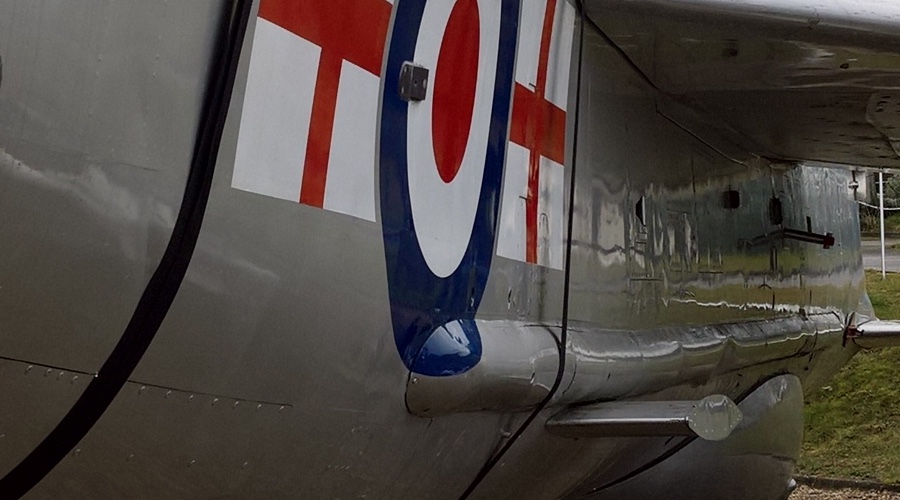
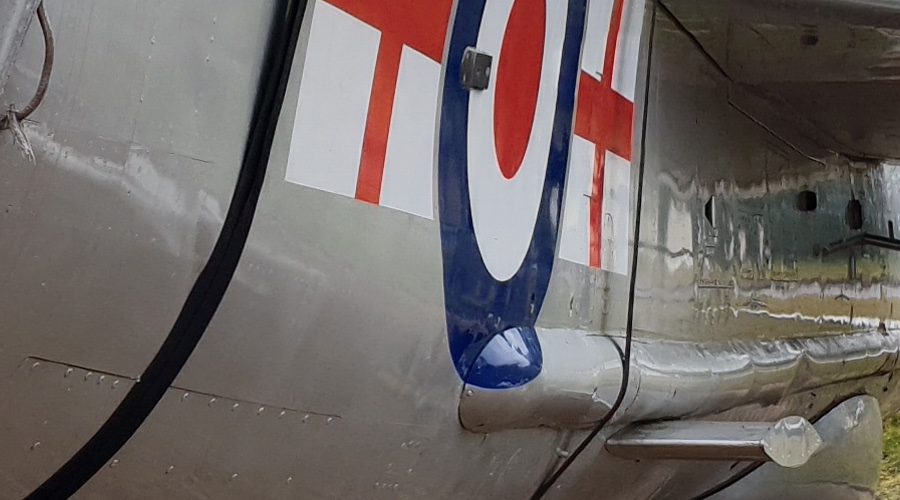
Two good photos here, of course, but the Lumia 950 nails the lighting best - it really was rather gloomy, while the S9 gives a hyper-real, HDR-ish look. Most people would think it was the more impressive photo, but it's not that accurate.
Microsoft Lumia 950: 10 pts; Samsung Galaxy S9: 9 pts
Test 2: Outdoor detail, better light
Still gloomy but the light was better for this shot of an old helicopter - a Wasp? Here is the whole scene, as presented by the Lumia 950:

In case you want to grab the original images to do your own analysis, here they are, from the Lumia 950 XL and Galaxy S9, click the links to download. And to look at the images in more detail, here are fairly central 1:1 crops, just wait to make sure the page has fully loaded and then use your mouse or trackpad pointer to compare the images:
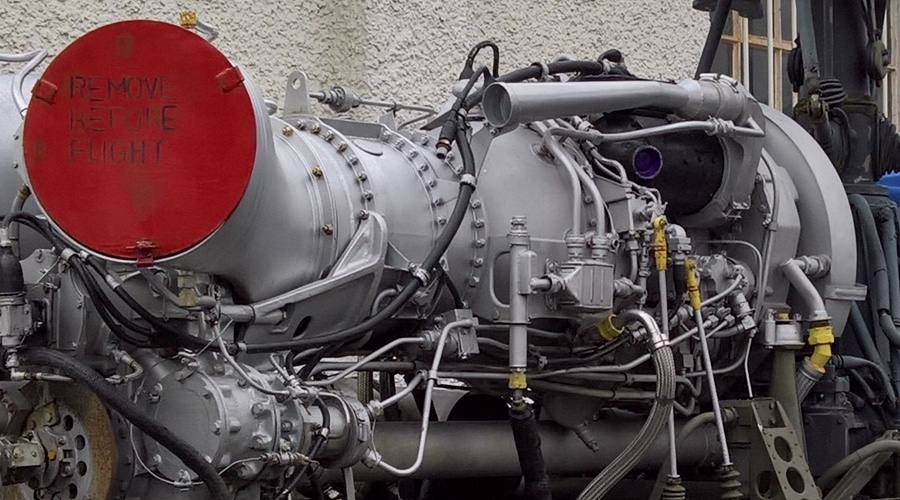
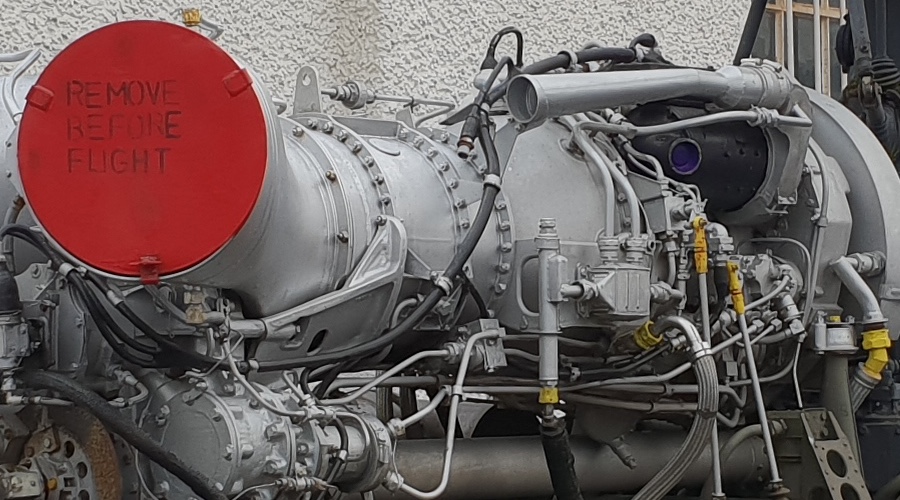
For a shot with this much artificial detail, there's little to choose between the two photos - both quite excellent. I'll return to the extra sharpening on the S9's shots below, but for now it's hard to complain.
Microsoft Lumia 950: 10 pts; Samsung Galaxy S9: 10 pts
Test 3: Indoor macro
The classic Lancaster bomber, here modelled at around 18" and shot through glass at point blank range. Here is the whole scene, as presented by the Lumia 950:
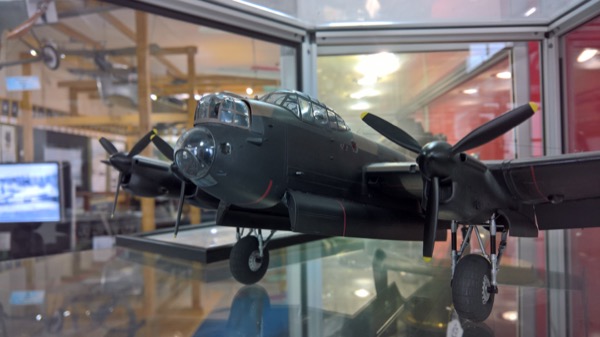
In case you want to grab the original images to do your own analysis, here they are, from the Lumia 950 XL and Galaxy S9, click the links to download. And to look at the images in more detail, here are fairly central 1:1 crops, just wait to make sure the page has fully loaded and then use your mouse or trackpad pointer to compare the images:


You start to get a glimpse of my biggest complaint about the S9 camera here - its image processing latches on to the slightest texture or detail and sharpens it - in this case, the tiny imperfections in the plastic get amplified and exagerated, while the Lumia 950 XL's native 'pure' processing and relative lack of artificial sharpening do a cracking job, in my opinion.
Microsoft Lumia 950: 9 pts; Samsung Galaxy S9: 7 pts
Test 4: Tough contrast
Another model, but this time three times bigger, mounted on top of a cabinet and with the windows behind it, making for tough contrast for the phone cameras to work out. Here is the whole scene, as presented by the Lumia 950:

In case you want to grab the original images to do your own analysis, here they are, from the Lumia 950 XL and Galaxy S9, click the links to download. And to look at the images in more detail, here are fairly central 1:1 crops, just wait to make sure the page has fully loaded and then use your mouse or trackpad pointer to compare the images:
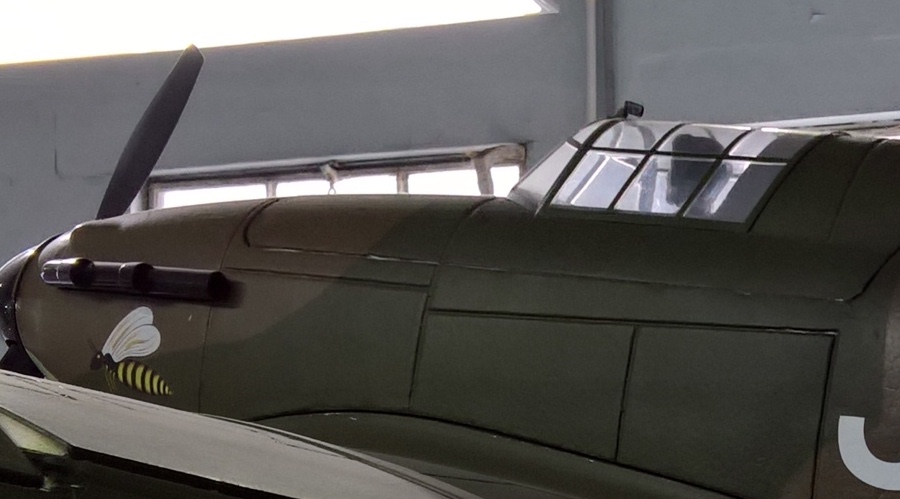
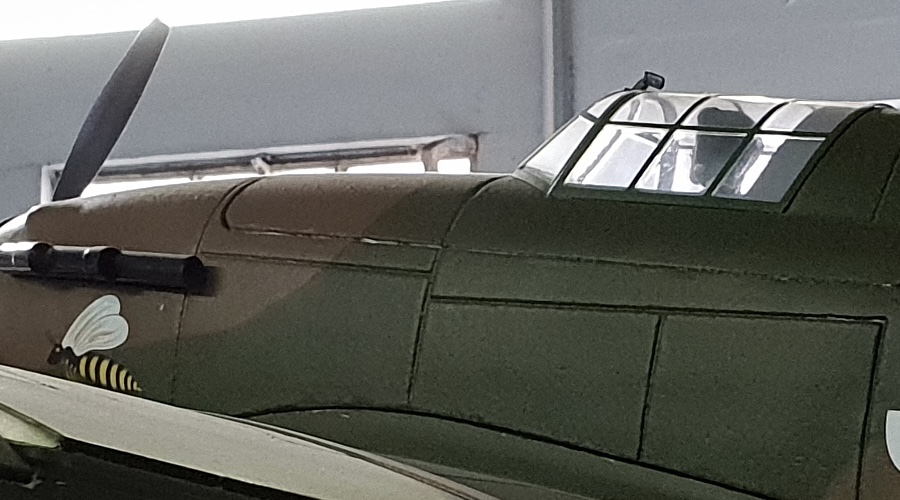
Sharpened texture is again the name of the game for the S9, but it does slightly better here and the overall shot is clearer than the Lumia's. Yet look again at the unbelievable purity of the 950 XL's output - effortless panes of colour with no distracting artefacts. I'm just saying...
Microsoft Lumia 950: 9 pts; Samsung Galaxy S9: 8 pts
Test 5: Natural detail
I'm sorry to do this to Samsung, but you can't disagree that things like grass and trees comprise quite a large proportion of peoples' photos - landscapes, gardens, and so on. Here is the whole scene, as presented by the Lumia 950 - yes, in more winter gloom, I'm afraid, but that just challenges the phone camera more, so I don't apologise too much!:

In case you want to grab the original images to do your own analysis, here they are, from the Lumia 950 XL and Galaxy S9, click the links to download. And to look at the images in more detail, here are fairly central 1:1 crops, just wait to make sure the page has fully loaded and then use your mouse or trackpad pointer to compare the images:
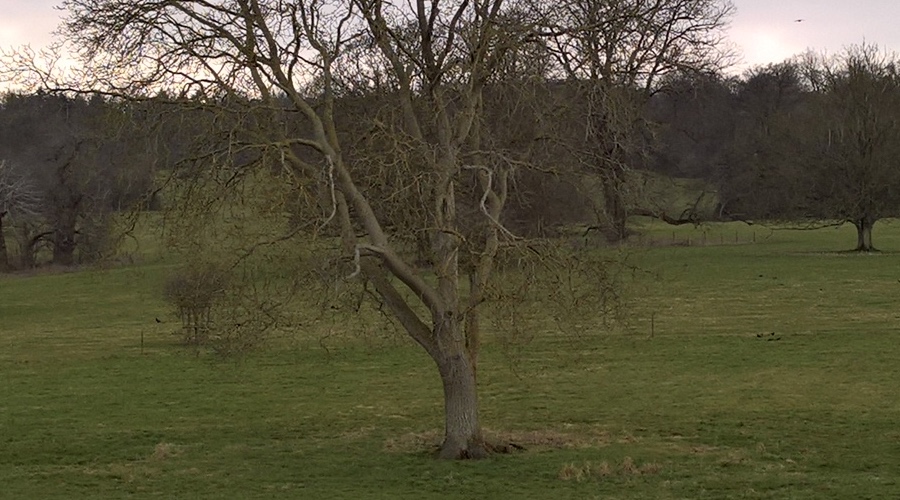
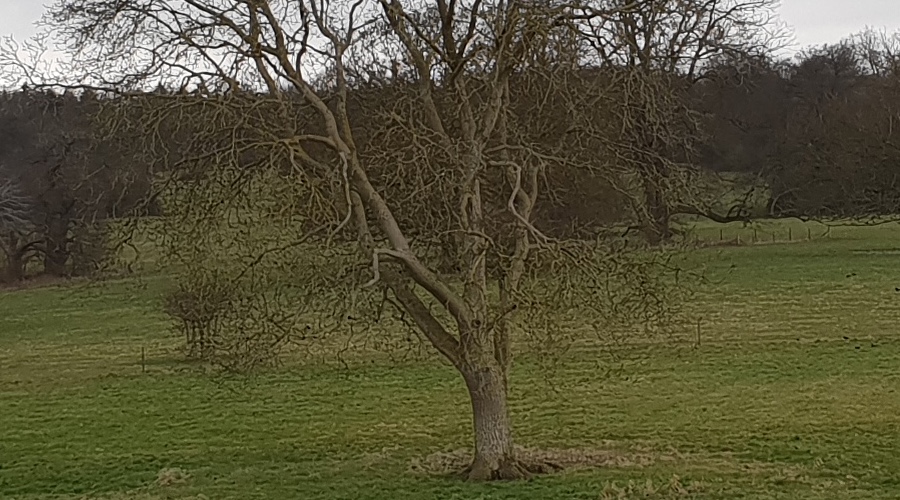
Look closely at the Lumia 950's shot - it's slightly artificial and your eyes can detect some sharpening and processing, but the overall effect isn't too off-putting. Now look at the Galaxy S9's - it's a right mess, with the sharpening producing a ghastly, jagged riot of pixels. Now, looked at on the phone screen the Samsung's shot looks fine - but this is what's underneath that phone-sized image. If you need to share it onwards or crop it slightly then you're going to start to run into big issues when shooting nature.
This isn't new for Samsung, mind you, I've been criticising this over-sharpening for the last five years in their flagships. So I guess we can assume that it's intentional by now. Their image processing is definitely optimised for people and 'things' rather than the expanse of greenery and nature!
Microsoft Lumia 950: 9 pts; Samsung Galaxy S9: 7 pts
Test 6: Low light detail
With the scene now firmly switched to Basildon Park in Berkshire, here's one of the ornate ceilings inside the house - very gloomily lit, MUCH darker than it would appear here, but both phone cameras do a good job of pulling in colour and detail. Here is the whole scene, as presented by the Lumia 950:

In case you want to grab the original images to do your own analysis, here they are, from the Lumia 950 XL and Galaxy S9, click the links to download. And to look at the images in more detail, here are fairly central 1:1 crops, just wait to make sure the page has fully loaded and then use your mouse or trackpad pointer to compare the images:


At last a win for the newer device. The subject suits the S9's edge enhancement and sharpening, plus its dual pixel focussing is much more accurate than the PDAF used in the Lumia - low light focussing its one of its weak spots. As a result, I'm convinced the 950 XL wasn't perfectly locked into focus, with the S9 winning out by quite a margin overall. The actual ceiling painting isn't quite as sharp edged as shown here but you can't help but be impressed by the clarity.
Microsoft Lumia 950: 6 pts; Samsung Galaxy S9: 9 pts
Test 7: The 2m test
Average lighting in a hallway (there was a skylight), and a detailed subject at around 2 metres, a pretty standard distance for real world casual photos. Here is the whole scene, as presented by the Lumia 950:

In case you want to grab the original images to do your own analysis, here they are, from the Lumia 950 XL and Galaxy S9, click the links to download. And to look at the images in more detail, here are fairly central 1:1 crops, just wait to make sure the page has fully loaded and then use your mouse or trackpad pointer to compare the images:
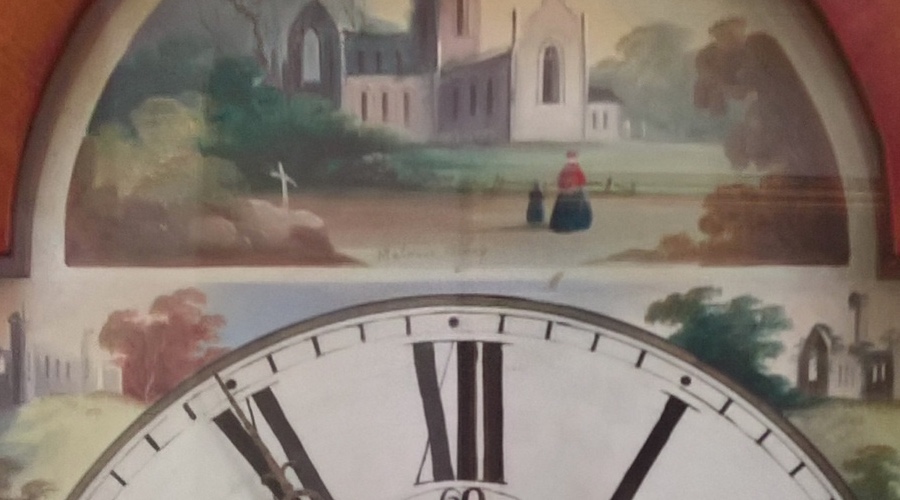
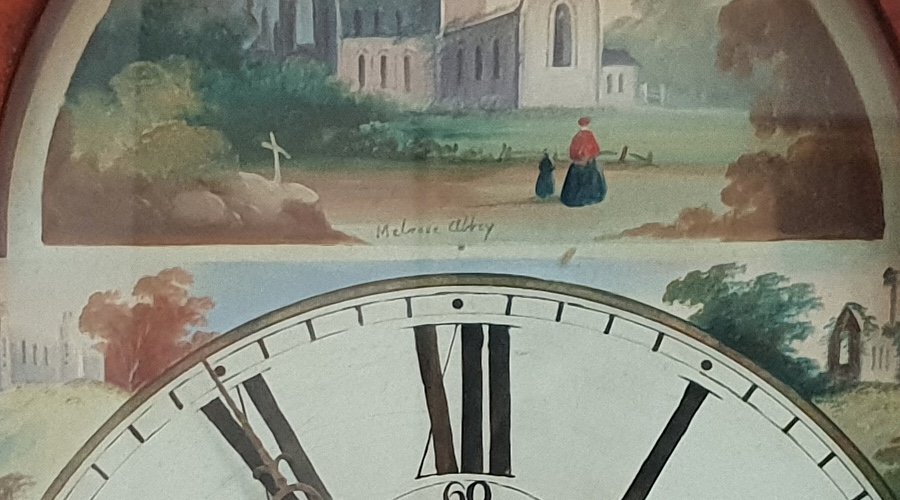
Despite the appearance of greenery in the painted sections, this is also right up the S9's street, with multiple exposures building up data and with close-up detail to latch onto and enhance. The Lumia 950 XL's image looks somehow woolly by comparison - partly because this was shooting through glass and there was some reflection going on, but mainly because one gets used to the hyper-sharp S9 edges and anything else looks somehow wrong. Anyway, however 'enhanced' it is, the S9's photo is tremendous to the eyes.
Microsoft Lumia 950: 7 pts; Samsung Galaxy S9: 10 pts
Test 8: Zoom
Looking out onto the runway at Farnborough, I zoomed to around 2x on both phone cameras. Here is the whole (zoomed) scene, as presented by the Lumia 950:

In case you want to grab the original images to do your own analysis, here they are, from the Lumia 950 XL and Galaxy S9, click the links to download. And to look at the images in more detail, here are fairly central 1:1 crops, just wait to make sure the page has fully loaded and then use your mouse or trackpad pointer to compare the images:
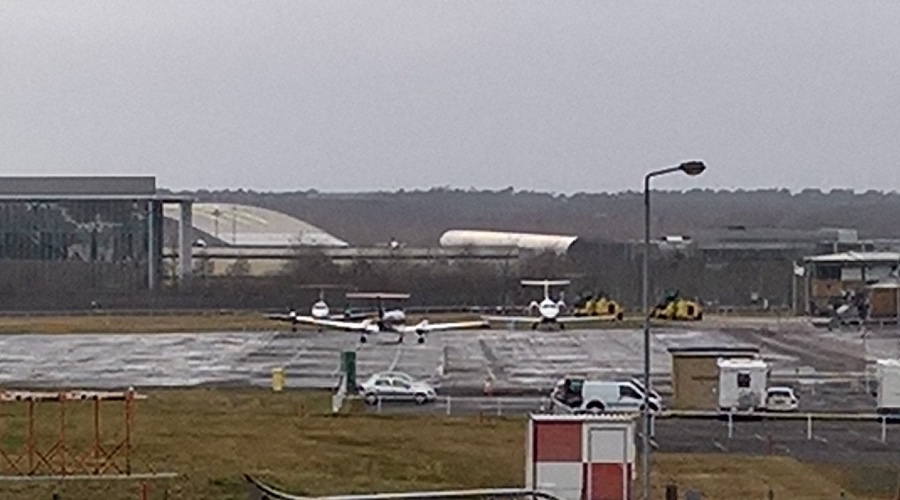
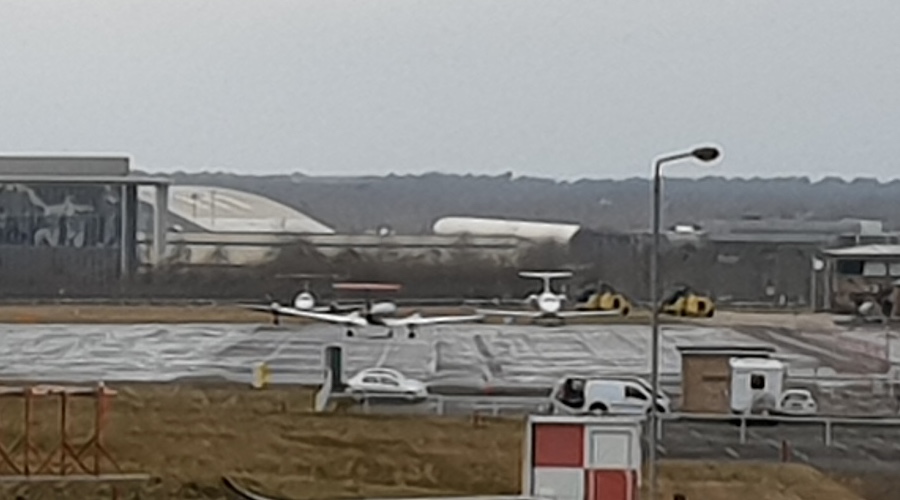
In theory, the Lumia 950 XL should have the edge here, with twice the native resolution to draw on, so half of the zooming should be lossless - however, you'll remember that digital zoom is the Lumia's other weak spot, and so the purely digital zoom on the S9 matches it. There's very slightly more detail in the Lumia's photo, but it's masked by the ugly, blocky digital zoom algorithms.
PS. Of course, if I'd been reviewing against the S9+, the variant with 2x optical zoom, the result in this test would have been very different. Watch this space for that one!
Microsoft Lumia 950: 8 pts; Samsung Galaxy S9: 8 pts
Test 9: Lady of the house
Inside the National Trust house is this nice portrait of the owner at the centre of this hall shot. Here is the whole scene, as presented by the Lumia 950:
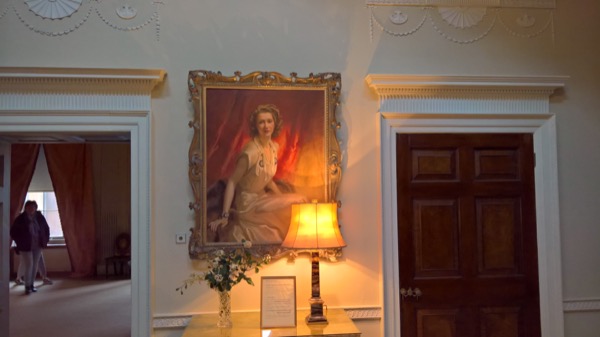
In case you want to grab the original images to do your own analysis, here they are, from the Lumia 950 XL and Galaxy S9, click the links to download. And to look at the images in more detail, here are fairly central 1:1 crops, just wait to make sure the page has fully loaded and then use your mouse or trackpad pointer to compare the images:
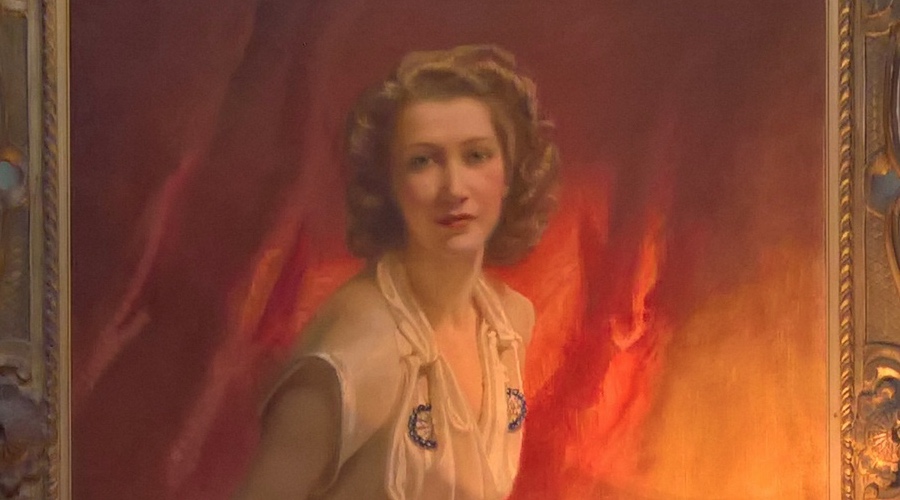

Too good attempts at the scene, though they each have their strengths. The Lumia 950 XL gets the colours most accurately, to my eyes, with the warm hues suited to its traditional warm palette, and with almost no noise or artefacts. While the S9's image combination and sharpening extracts genuine extra detail, at the expense of harsher contrast and harder colours. A score draw, I think.
Microsoft Lumia 950: 9 pts; Samsung Galaxy S9: 9 pts
Test 10: Night time
My standard suburban ultra low test, at dead of night. Here is the whole scene, as presented by the Lumia 950:

In case you want to grab the original images to do your own analysis, here they are, from the Lumia 950 XL and Galaxy S9, click the links to download. And to look at the images in more detail, here are fairly central 1:1 crops, just wait to make sure the page has fully loaded and then use your mouse or trackpad pointer to compare the images:
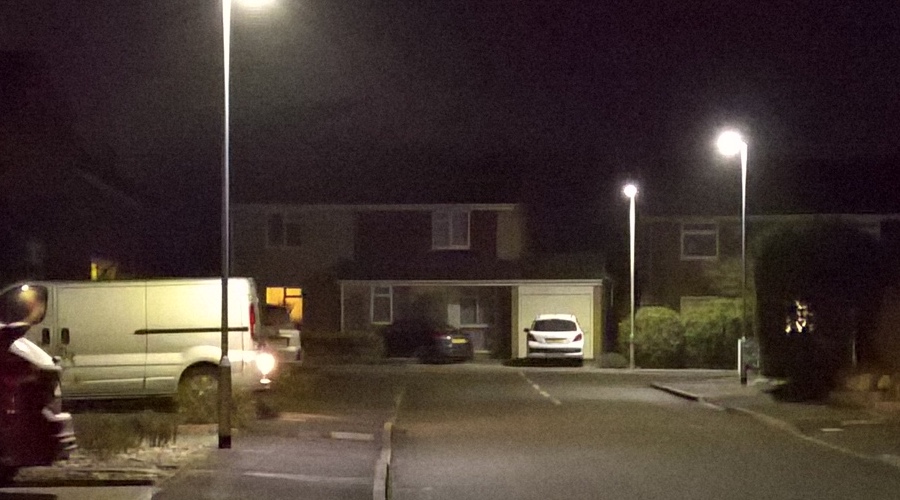
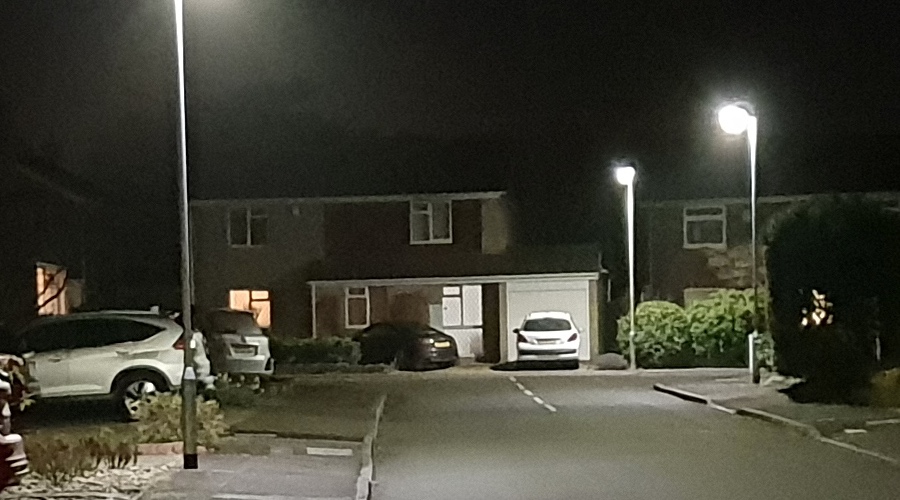
With very little light around (the scene was MUCH darker to my eyes), both phone cameras did amazingly well for a handheld shot - the 950 XL's is slightly noisier but less artificial, while the S9 uses multiple exposures to build up a noise free image that's also very crisp, though the sharpening then ruins the effect slightly by making fine detail too blocky.
Microsoft Lumia 950: 9 pts; Samsung Galaxy S9: 9 pts
Verdict
Adding up the points gives us - and I'm not making this up or fixing it in any way - a dead heat:
- Lumia 950 XL: 86/100
- Galaxy S9: 86/100
It's amazing really. That a 2015 camera phone can still be on equal terms with the 2018 competition. The iPhone X, Google Pixel 2 XL, Huawei Mate 10 Pro, and now the Galaxy S9, are all right up there at the same level, shot for shot, and of course the much newer phones are faster to focus and much faster to process than the (now rather) old Lumia.
The S9 does particularly well when light gets low, with the combination of that huge f/1.5 aperture and the multiple exposure combination/alignment software producing results that were previously the province of the Lumia 'PureView' camera phones. Indeed, the S9 would have marched away with this test if it hadn't been for Samsung's usual failing - sharpening that's, quite simply, overdone. Anything with grass or trees is a no-no, which is unfortunate. If only the sharpening could be dialled back then we'd have a runaway winner.
PS. So the S9 tied - will any current phone actually defeat the Lumia 950 XL? Kind of, yes, see my head to head with the iPhone X. And the Galaxy S9+ should do just as well, but I'll come to that another day.

